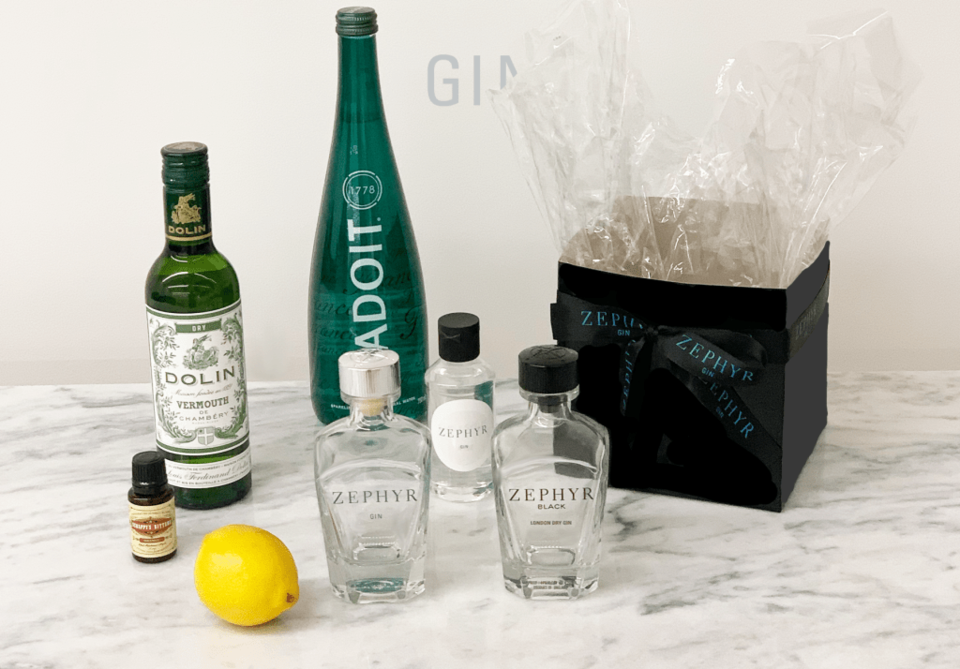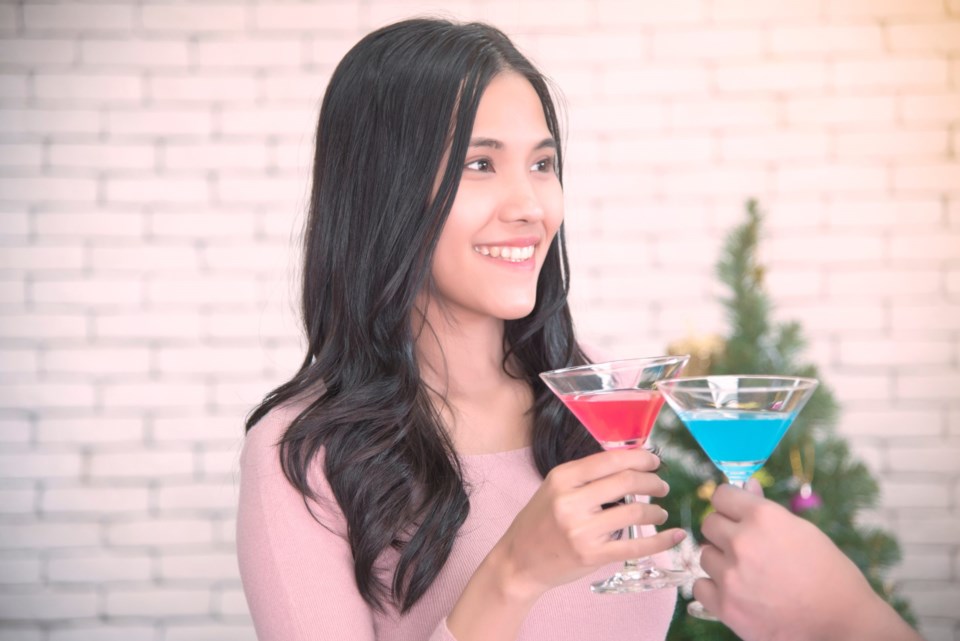On a September day at 5 p.m., I shut down my work email and opened up Zoom. About 20 people were there, tuning in with their microphones off, with identical bottles of Zephyr Gin, sparkling water, and orange bitters on hand. We were ready for class.
Zephyr Gin and Alto, a Dallas-based delivery service, were hosting a mobile mixology class. The day before, all participants opened their doors to a bag of products delivered by Alto: two bottles of Zephyr gin, a bottle of simple syrup, vermouth, orange bitters, a lemon, and sparkling water.
The next day, hosted by local TV personality Kara Sewell, Zephyr Gin National Mixologist Trever Landry walked us through the creation of two classic drinks: a Tom Collins and a Zephyr black gin martini.
This kind of online class began cropping up in the early days of the COVID-19 quarantine. In April, an escape room in Los Angeles began hosting online experiences, where groups of friends could be trapped in a virtual experience and given 60 minutes to escape on Zoom. Airbnb offered immersive, virtual trips designed to be offered by local hosts so that people could “learn a new skill, safely connect with others or pursue an interest.”
Zephyr offered a class simply because people miss the normal things in life, like ordering a classic cocktail at a high end restaurant or going on a date night somewhere other than the kitchen table. Not only was the class an opportunity to learn a new skill, it was also a chance for people to socialize and to get a taste of the high life back.

Gin, Landry explains, has a long history of popularity in the U.K. and the U.S. Though most people nowadays are most familiar with a classic London dry gin, with very strong notes of juniper, in the 18th Century, even into the early 20th century, gin was softer, with more unique notes and styles at play. In the 1960s, Landry explains, vodka began to replace it in staple cocktails like the martini. Today, gin ranks behind vodka, whiskey, and rum, but is enjoying a new resurgence in recent years.
He invites us all to taste the first of the gins that has been delivered with Zephyr’s signature gin. It’s surprising, full of botanical notes that temper juniper’s sharp edges. Zephyr is known for infusing this spirit with both elderberry and elderflower for bright, berry finish.
With this gin, we make a Tom Collins. Landry goes slow, walking us through the process and adapting it to what we might have available. For those who don’t have an actual Collins glass, any tall, thin one will do. It’s essentially a spiked sparkling lemonade, simple syrup and fresh lemon juice with botanical gin and a finishing touch of sparkling water. It’s a summer drink and particularly well-suited to Zephyr’s delicate first gin.
The second bottle of gin is a little more robust: it’s Zephyr Black, their London dry gin.
“It’s a martini gin, proper for a gin and tonic,” Landry says, before discussing the difference between shaking and stirring a martini, and alternative measuring and pouring utensils for those who don’t have jiggers.
Before we rub our lemon twist on the edge of the glass, Landry asks us to taste it without the twist, so that once it’s added, we recognize what a difference it makes. Aroma is half of taste, he reminds us as we try our homemade Zephyr Black martinis.
Throughout the demonstration, viewers chime in on the online chat, asking for clarification, and praising the flavors coming together in their martini glasses. After the work is done, we settle in to finish the rest of the hour, asking Landry more questions about Zephyr, or the steps we took.
For example, James Bond is probably wrong to request his martini shaken, not stirred. The purpose of both is to chill the martini thoroughly, but stirring a martini gives the bartender much more control. Shaking is rougher, leading to a greater chance of the ice chipping, which will water down the drink.
We also learned that vermouth only lasts about 30 days, and if we keep it any longer, its gone bad, which might explain why I’ve never liked vermouth.
By the end of the night, everyone has two craft cocktails worthy of a speakeasy, made in the comfort of their own kitchens. We depart with new knowledge and new party skills. Zephyr and Alto haven’t yet released details on what another class might entail. But whether it’s with a group of strangers or an organized, private event with friends (which apparently can be arranged) a Zephyr/Alto cocktail class is a productive, entertaining way to spend an evening.
Do try this at home.
For more information visit: https://dfwsips.marketbyalto.com/products/virtual-cocktail-class-with-zephyr-gin




